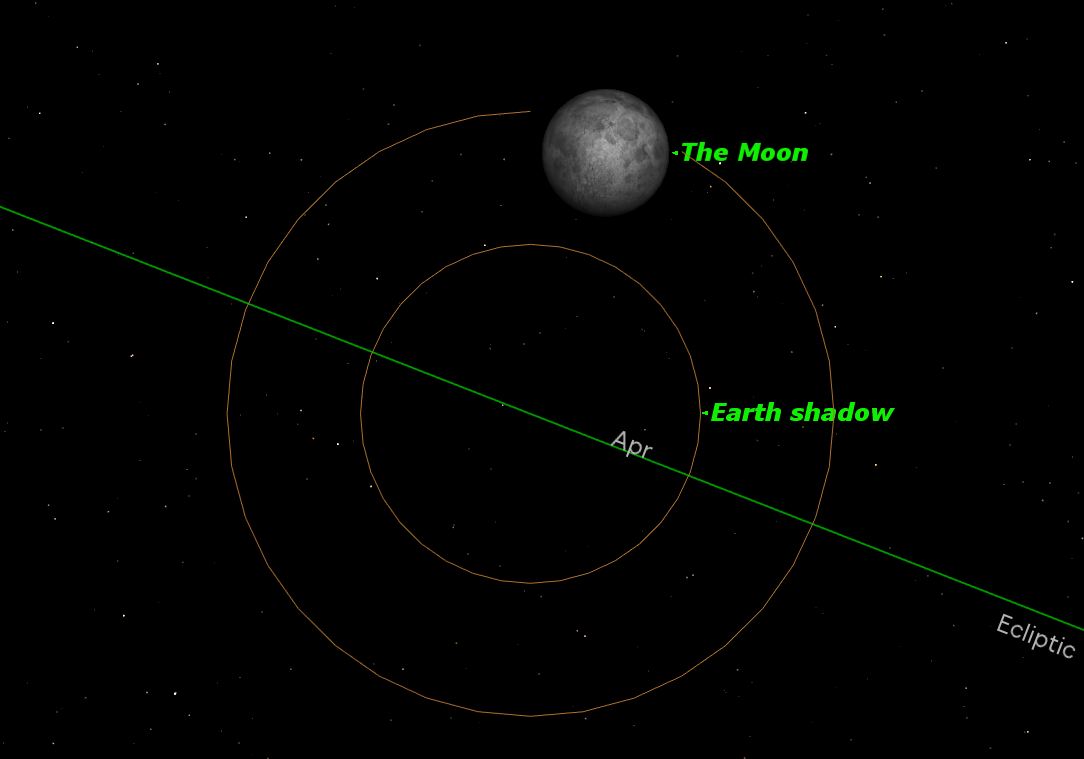Partial Lunar Eclipse Occurs Friday: How to See It

(Editor's Note: The Slooh Space Camera webcast of the penumbral eclipse has begun. Watch it live here: See Minor Lunar Eclipse in Slooh Webcast )
The moon will dip through part of Earth's shadow in a partial lunar eclipse on Friday (Oct. 18), but it may be tough to see for skywatchers in North America.
During the lunar eclipse Friday, part of the moon will skirt through only the outer edge of the Earth's shadow in what scientists call a penumbral lunar eclipse.
If you look closely at any shadow cast by the sun, say the one cast by your hand on a piece of paper, you will notice that the edge of the shadow isn't sharp. That's because the sun is not a point source of light. It is a disk, so the shadows it casts are slightly fuzzy. The solid dark part of the shadow is called the "umbra" (Latin for "shade"). The fuzziness along the shadow's edge is called the "penumbra" (Latin for "almost shade"). [See amazing penumbral lunar eclipse photos by stargazers]
When a shadow is cast by a nearby object, the penumbra is very slight. But when the shadow is as far away as the moon is from the Earth — about 238,000 miles (384,400 kilometers) on average — the penumbra is quite wide.
The sky chart included in this guide shows the lunar eclipse setup at the time of maximum eclipse, which will occur at 7:50 p.m. EDT (2350 GMT) Friday. The inner circle is the umbra, the outer circle the penumbra. The moon makes it part way into the penumbra, but misses the umbra completely, hence this is a "partial penumbral eclipse."
For observers in North America and South America, maximum eclipse will be around the time of moonrise, which is also the time of sunset. This will make the eclipse difficult to see, because we will be looking for a slight dimming of the moon which is already dimmed by passing through a great deal of the Earth’s atmosphere.
Breaking space news, the latest updates on rocket launches, skywatching events and more!
The farther east and north you are located, the better your chances of seeing this eclipse.
For example, in New York City, the moon will rise at 5:59 p.m. EDT, and will be at an altitude of 20 degrees at maximum eclipse. In Chicago, moonrise is at 5:54 p.m. CDT and the moon’s altitude only 9 degrees at maximum eclipse. In Los Angeles, moonrise is at 6:09 p.m. PDT, more than an hour after maximum eclipse, so the chances of seeing the eclipse are zero.
For observers in North America, the effects of the Earth's shadow on the moon will be most pronounced on the lower right corner of the moon.
The shadow will probably be more pronounced in photographs than with the naked eye, so this is a good opportunity to get out your telephoto lens and photograph the rising moon. Remember that maximum eclipse will be at 7:50 p.m. EDT/6:50 p.m. CDT.
For observers in Africa, Europe, and western Asia, the eclipse will occur in the middle of the night when the moon is high overhead. The partial shading will be visible as a slight reddish dimming of the normally bright full moon.
Editor's note: If you snap a photo of Friday's penumbral lunar eclipse and would like to share it with SPACE.com for a possible gallery or story, send images and comments to Managing Editor Tariq Malik at: spacephotos@space.com.
This article was provided to SPACE.com by Starry Night Education, the leader in space science curriculum solutions. Follow Starry Night on Twitter @StarryNightEdu.Follow us @Spacedotcom, Facebook and Google+. Original article on SPACE.com.

Geoff Gaherty was Space.com's Night Sky columnist and in partnership with Starry Night software and a dedicated amateur astronomer who sought to share the wonders of the night sky with the world. Based in Canada, Geoff studied mathematics and physics at McGill University and earned a Ph.D. in anthropology from the University of Toronto, all while pursuing a passion for the night sky and serving as an astronomy communicator. He credited a partial solar eclipse observed in 1946 (at age 5) and his 1957 sighting of the Comet Arend-Roland as a teenager for sparking his interest in amateur astronomy. In 2008, Geoff won the Chant Medal from the Royal Astronomical Society of Canada, an award given to a Canadian amateur astronomer in recognition of their lifetime achievements. Sadly, Geoff passed away July 7, 2016 due to complications from a kidney transplant, but his legacy continues at Starry Night.

